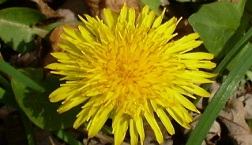Organic Weed and Pest Control
Organic Gardening is the way Nature intended its vegetables, herbs and
fruits to be grown.
 Since
organic gardening, by definition, means avoiding harsh chemicals to
control pests, weeds and diseases in your garden, care is needed when
picking products for these uses.
Since
organic gardening, by definition, means avoiding harsh chemicals to
control pests, weeds and diseases in your garden, care is needed when
picking products for these uses.
Hand weeding and hand picking of small insect pests and fences and
barriers against larger pests are the traditional methods used by
organic gardeners, there are times when other methods make good sense.
We have found the products you need to make your disease control, weed
control, and pest control easier.
Pest Control
 Birds,
ladybugs and praying mantises are the gardener's best friends when it
comes to insect control. Birds can be encouraged into the
garden by providing a feeder, a birdbath, or by providing plants that
grow berries for them to eat.
Birds,
ladybugs and praying mantises are the gardener's best friends when it
comes to insect control. Birds can be encouraged into the
garden by providing a feeder, a birdbath, or by providing plants that
grow berries for them to eat.
Ladybugs are now for sale by the pint, quart or gallon. The
average-sized garden can get by on a quart or less, as there will be
about 25,000 to 30,000 bugs per quart. The cost is generally less than
five dollars a quart. The average adult ladybug consumes between 40
and 50 aphids a day.
Praying mantis cases are also available and each one hatches up to 400
young. The cost is rather nominal for a case. A few gardeners have
reported that this insect disappears rather rapidly from the garden,
so you might want to experiment with just a few to begin with. They
will eat any insect they can catch.
Weed Control
 Get
them before they start... Weeds compete with garden plants for
nutrients, space, and sunlight. Weeds can make your otherwise
tidy organic garden appear scraggly, and weeds harbor insect pests
that carry diseases. The best way to control weeds without chemical
herbicides is to prevent them from establishing themselves in your
garden.
Get
them before they start... Weeds compete with garden plants for
nutrients, space, and sunlight. Weeds can make your otherwise
tidy organic garden appear scraggly, and weeds harbor insect pests
that carry diseases. The best way to control weeds without chemical
herbicides is to prevent them from establishing themselves in your
garden.
Adding a 3-inch layer of organic mulch is
one of the best methods you can use to prevent weeds. Mulch
prevents sunlight from reaching weed seeds, preventing them from
germinating. Mulch retains moisture in the soil and keeps it from
compacting, so that you can easily pull young weeds as they sprout.
You can choose bagged wood chips or shredded
bark for your garden mulch, but compost makes excellent mulch.
If you use compost or other finely textured mulch like grass
clippings, replace it as frequently as once a month, as it breaks down
quickly.
If you are preparing to dig or till a new plot of exposed earth,
devote a day to removing as many weeds as possible first. Many
perennial weeds, like bindweed and thistle, spread by means of
rhizomes or creeping stems. If you leave root segments behind, your
tiller could distribute these viable plant parts throughout your
garden, multiplying your weed problem a hundredfold.
You can make the greenhouse effect work for you by baking weeds and
their seeds in the sun before you plant a barren plot. In the summer,
cut all existing weeds to ground level. Water the area thoroughly, lay
a sheet of clear plastic over the entire plot. Old shower curtain
liners work well for this chore. Pin the plastic down with metal
u-shaped stakes so the wind doesn't move the plastic sheets. If you
use a single large sheet, weigh the center portion down with rocks to
prevent cooling air pockets from forming.
After 8-10 weeks, the suns radiant energy will have sufficiently
raised the temperature of the soil so that all weeds and seeds are no
longer viable. As an added benefit, solarization kills many soil-borne
diseases and pests. Your organic plot is now ready for a fall planting
of cool weather vegetables.
